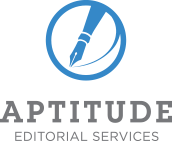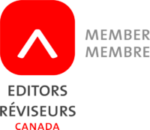Posts
Avoiding Plagiarism
/in Editing, writing/by Leslie SaffreyPlagiarism is popping up in the news again, and it makes regular appearances in discussions on editors’ forums. But there is often confusion as to what constitutes plagiarism. Simply put, plagiarism is making someone else’s writing appear to be your own. It’s not enough just to name the source; text that is directly quoted must appear in quotation marks (with a source citation, of course). Text that’s not inside quotation marks must be thoroughly paraphrased, and if it describes someone else’s original idea, the source should be credited. Changing a few words is not proper paraphrasing; the borrowed text must differ from the source throughout, not only in vocabulary but also in structure.
Tips
- When doing research, as soon as you open a source (book, article, website) copy the publication information into your notes:
- book: author, title, publisher and location, date
- article: author, title, journal, date, volume, issue, and page numbers; URL or DOI
- website: author (if applicable), website name, organization, URL
- Keep your notes organized so that the source of each bit of information is clear.
- If you paste direct quotes into your notes, clearly mark them as quotes—put them in quotation marks, and perhaps make them a different font colour or put them in a box. Make sure that later you’ll easily be able to tell what is a direct quote and what are your own notes and thoughts, and where each quote came from, including specific page numbers. In my own research, my notes start out almost entirely as identifiable quotes; later, after I’ve done more reading and mulled over the ideas, I paraphrase them and add my own thoughts.
- When you come to write the document, decide if you want to use a few direct quotes: usually a sentence or so that expresses an idea particularly well or in a distinctive way that you want to share with your readers. Use direct quotes sparingly, and double-check that each one is correctly credited. Ensure that you properly paraphrase anything not appearing in quotation marks, changing not only the words but the structure of the passage, such as the order in which ideas are presented and the syntax of each sentence.
- Always cite your sources. Even if you’ve carefully and thoroughly paraphrased, give credit for the ideas that aren’t your own. If it’s important that your document show original thinking on your part, let it be your insight into the topic gained through gathering, analyzing, and synthesizing ideas from various named sources. As a bonus, citing sources shows that you’re keeping up with the experts in your field.
Creating Reports That Get Results
/in writing/by Leslie SaffreyAn effective report is structured, written, and designed with a particular audience in mind. And, equally important, it has a specific purpose: its creators know exactly what they want that audience to do after reading it.
In creating any document, you should identify its likely readers—the audience. What do they already know about the subject? Are they experts familiar with the terminology and concepts, or do they need some background information? Are they mainly interested in the technical details of a project, or in how much it will cost? What kind of decision-making power do they have? Time spent on a careful audience analysis is always a good investment. Here are some resources that can help you get started:
Purdue Online Writing Lab: Audience Analysis Overview
David McMurrey: Audience Analysis: Just who are these guys?
Jean Weber, Technical Editors’ Eyrie: Audience and Document Analysis
Closely related to the audience is the purpose. Many reports are meant to persuade the reader to take action, whether it’s fighting climate change or choosing a new office coffeemaker. The desired actions emerge as you collect and analyze your data, and as you keep asking yourself “What is the problem, and what is its solution?” When your analysis is complete, you can express the audience and purpose in the following form: “This report is intended to persuade [the target audience] to act in the following ways: 1. … 2. … 3. …”
These actions are the report’s recommendations, perhaps named “calls to action” or “solutions.” The recommendations can become the backbone of the report’s outline. Key findings from the data are laid out to show a clear and logical path to each recommendation. The outline is fleshed out with the answers to other questions, keeping the audience in mind: What problems or challenges led to the study? How was data collected? What did the data reveal? What are the benefits and drawbacks of possible actions? What are the costs?
The report’s design should clearly reflect its structure. The recommendations should jump out at the readers, both in the executive summary and the body of the report. Keep the pages uncluttered; use figures and tables if they help the readers understand what you’re asking of them, but otherwise leave them out.


